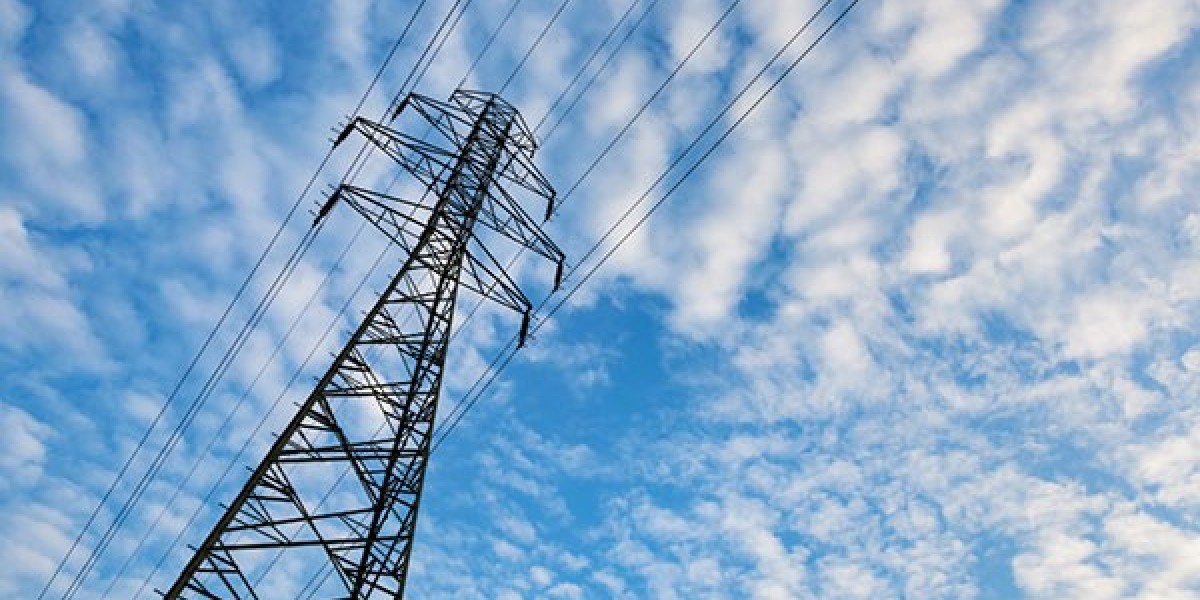Telecom Shelter, also known as telecom huts or telecom enclosures, are secure, weather-resistant structures designed to house telecommunications equipment. These shelters play a crucial role in the deployment and operation of mobile networks, ensuring that equipment operates safely and efficiently in various environmental conditions. Whether for base stations, data centers, or telecom towers, telecom shelters provide protection from the elements, security from unauthorized access, and space for vital equipment.
What is a Telecom Shelter?
A telecom shelter is a prefabricated structure used to house telecom equipment, such as servers, routers, power supplies, cooling systems, and other critical infrastructure components. These shelters are designed to ensure that telecom equipment remains operational in remote locations, often exposed to harsh weather conditions or extreme temperatures.
Telecom shelters are built with various materials, including steel, aluminum, and composite materials, to ensure durability and provide adequate protection for sensitive electronics. They are commonly used by mobile network operators, internet service providers, and utility companies to house network infrastructure in places where traditional buildings are impractical or unavailable.
Key Features of Telecom Shelters
Weather Resistance
- Telecom shelters are built to withstand a wide range of weather conditions, including extreme temperatures, high winds, heavy rain, snow, and even seismic events. The materials used in the construction of these shelters are typically designed to be weatherproof and weather-resistant, ensuring that the equipment inside remains safe and functional no matter the external conditions.
- For outdoor telecom shelters, high IP (Ingress Protection) ratings are standard, such as IP55, IP65, or even IP67, ensuring that the shelter is sealed against dust, water, and other environmental contaminants.
Climate Control and Cooling Systems
- Inside the shelter, telecom equipment often generates significant heat. To prevent overheating and ensure optimal performance, telecom shelters are typically equipped with climate control systems, such as air conditioning, ventilation systems, and passive cooling mechanisms.
- For smaller installations or less heat-sensitive equipment, natural ventilation may be sufficient, with the design of the shelter allowing air to flow freely through vents to keep the internal temperature regulated.
- More advanced telecom shelters may include integrated cooling systems, such as air conditioning units or heat exchangers, especially in areas with extreme temperatures.
Security and Access Control
- Security is a top priority for telecom shelters, as the equipment inside is critical for network operations. Most telecom shelters are designed with lockable doors, reinforced walls, and tamper-resistant features to prevent unauthorized access.
- Some shelters are equipped with biometric or electronic access control systems to ensure that only authorized personnel can enter the facility. Additionally, surveillance cameras and alarm systems are often included for added security.
Power Management and Backup Systems
- Telecom shelters are designed to provide reliable power to the equipment inside. Shelters typically include dedicated power distribution units (PDUs) that manage and distribute electricity to the various systems and devices.
- Backup power solutions, such as diesel generators, uninterruptible power supplies (UPS), or battery storage systems, are often integrated into telecom shelters to ensure that the equipment remains operational in the event of a power outage. These backup systems are especially critical for ensuring that telecom services remain uninterrupted during emergencies or power disruptions.
Rugged Construction
- Telecom shelters are built to be robust and resilient, capable of withstanding impacts, vibrations, and extreme environmental stress. The walls, roofs, and floors of the shelter are reinforced with heavy-duty materials like steel or aluminum to ensure the shelter can endure harsh conditions.
- The shelter’s design often includes structural reinforcements to resist damage from natural disasters, such as hurricanes, earthquakes, or floods, and to protect sensitive telecom equipment from physical damage.
Modular Design
- Many telecom shelters feature modular designs, allowing for easy customization and expansion. This is particularly useful for telecom companies that need to scale their operations or adjust their equipment as technology advances.
- Modular shelters allow for additional components or equipment to be added without major construction work, providing flexibility and reducing installation time.
Space Efficiency
- Telecom shelters are designed to maximize the use of available space. Inside, there are often racks, shelves, or cabinets to organize and store telecom equipment efficiently. The compact design of telecom shelters allows for high-density configurations, ensuring that a significant amount of equipment can be housed in a small footprint.
Fire Safety Features
- Since telecom shelters house electrical equipment that may be prone to overheating or short circuits, they are equipped with fire safety features, such as fire-resistant materials, fire suppression systems (like automatic sprinklers or gas-based suppression systems), and fire alarms.
Types of Telecom Shelters
Outdoor Telecom Shelters
- These shelters are built specifically for outdoor use and are designed to endure exposure to the elements. They are typically weatherproof, offering protection against rain, wind, heat, and snow. Outdoor telecom shelters are commonly used for mobile base stations, remote network sites, and data hubs that need to be placed in areas without access to traditional buildings.
Indoor Telecom Shelters
- Indoor shelters are used in environments where outdoor exposure is not necessary. They are often deployed in buildings or facilities like telecom hubs, data centers, or centralized switching stations. While these shelters still need to be durable and secure, their primary function is to house telecom equipment within a controlled, temperature-regulated indoor environment.
Mobile Telecom Shelters
- Mobile telecom shelters are portable units that can be easily transported to various locations. They are often used in temporary telecom setups, such as during emergency response situations, special events, or for field operations where a fixed infrastructure is not available. These shelters are typically mounted on trailers or designed to be easily transportable.
Hybrid Telecom Shelters
- A hybrid telecom shelter combines elements of both outdoor and indoor designs. These shelters are commonly used in regions with varying climates or when high mobility and portability are required. They may feature a combination of weather-resistant exterior with modular, scalable interior components to support telecom equipment.
Benefits of Telecom Shelters
Protection from Environmental Hazards
- Telecom shelters provide an essential layer of protection against extreme weather conditions, vandalism, and other environmental hazards. Whether it’s excessive heat, heavy snow, or high winds, telecom shelters ensure that telecom equipment remains safe and functional.
Improved Reliability
- By maintaining optimal operating conditions for telecom equipment, telecom shelters improve the reliability and uptime of network services. This is particularly important for services that require 24/7 operation, such as mobile communications, internet services, and critical infrastructure.
Reduced Maintenance Costs
- Telecom shelters help reduce the need for costly repairs by protecting equipment from external factors that could cause damage or wear. This reduces maintenance costs and extends the lifespan of telecom equipment, leading to a more cost-effective solution over time.
Scalability and Flexibility
- The modular nature of many telecom shelters allows for easy expansion as network demands increase. Additional space can be created, and new components or equipment can be added without disrupting existing systems.
Enhanced Security
- With their robust construction, advanced security systems, and monitoring capabilities, telecom shelters ensure that equipment remains secure, preventing theft, vandalism, or sabotage. This is particularly important for high-value equipment or in areas with a high risk of unauthorized access.
Applications of Telecom Shelters
Mobile Network Base Stations
- Telecom shelters are commonly used to house equipment for mobile network base stations, which transmit and receive signals for mobile phones and other wireless communications. These shelters provide power, security, and environmental protection for critical telecommunications infrastructure.
Remote Communication Stations
- In remote or hard-to-reach areas, telecom shelters serve as centralized hubs for communication equipment, supporting data transmission, voice services, and emergency communications.
Emergency Response
- During natural disasters, telecom shelters can be rapidly deployed to provide communication infrastructure where traditional networks have been disrupted. These portable shelters are equipped with backup power and cooling systems to ensure continued operation.
Data Centers
- Telecom shelters can also be used as small-scale data centers, where critical data storage and processing equipment is housed in a secure, climate-controlled environment.
Telecom Hubs
- Telecom hubs house essential switching equipment, routers, and servers that facilitate the routing of voice, data, and internet traffic. Telecom shelters provide the ideal environment to support these hubs, ensuring that the equipment operates efficiently.
Conclusion
Telecom shelters are essential for the efficient operation and protection of telecommunications infrastructure. These robust, secure, and weather-resistant enclosures ensure that telecom equipment is protected from environmental hazards and operates reliably in even the harshest conditions. Whether for mobile network base stations, data centers, or emergency response, telecom shelters play a critical role in maintaining the integrity and uptime of telecom networks worldwide. Their modular design, scalability, and security features make them a versatile solution for modern telecommunications needs.
Naijamatta is a social networking site,
download Naijamatta from Google play store or visit www.naijamatta.com to register. You can post, comment, do voice and video call, join and open group, go live etc. Join Naijamatta family, the Green app.
Click To Download
